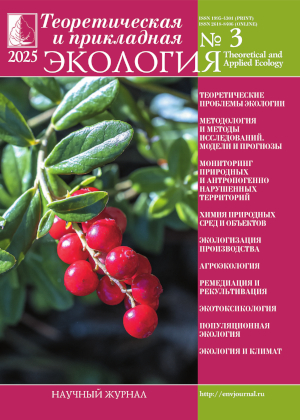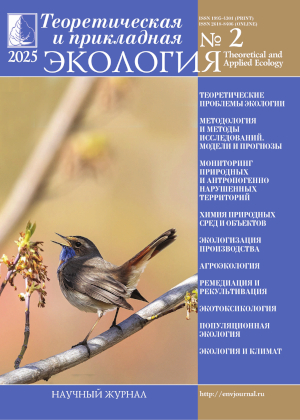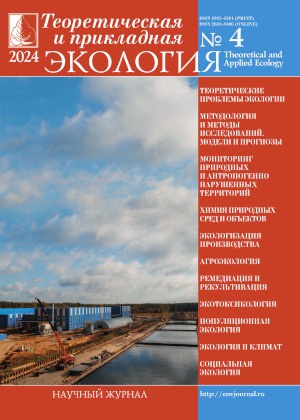 ISSN 1995-4301
ISSN 1995-4301(Print)
ISSN 2618-8406
(Online)
Online version of the journal
|
Determination of the values of feeding coefficient and the coefficient of feed utilization by planktonophagous fish in the lower reaches of the Vychegda River |
||||
| N.G. Otchenash, I.I. Studenov, I.Yu. Makedonskaya, E.V. Medvedeva, M.A. Studenova, G.V. Fuks, V.S. Sherstkov, R.A. Melnik, L.V. Paruhina | ||||
| Section: Methodology and research methods. Models and forecasts |
||||
| This paper presents the results of studies of the aquatic ecosystem components of the lower reaches of the Vychegda River. During 2022 growing season we found 234 species of various microalgae belonging to 8 departments. The phytoplankton community is diatom-green with small forms of organisms from other departments. 45 taxonomic units represented the zooplankton community over the entire period of research. We identified 20 taxa of Cladocera, 11 taxa of Copepoda, and 14 taxa of Rotatoria. Widespread Palearctic organisms formed the community. According to the results of control catches, six species of fish were identified: roach, perch, bream, ruff, silver bream and walleye. Perch and roach dominated the catches (87.7% of the catch). Material on 150 larvae and fry of bleak and ruff was obtained. The coefficient of feed utilization (KE) for phytoplankton averaged 0.033, for zooplankton – 0.11. The coefficient of assimilated food by zooplankton (K3) corresponded to an average of 0.348 (34.8%), the same indicator for planktonophagous fish was not above 0.3 (30%). The feeding coefficients of phytoplankton and zooplankton for the lower reaches of the Vychegda River averaged 30 and 9, respectively. Thus, the obtained feeding coefficients in 2022 growing season are close to the zonal ones for the Northern Fisheries Basin. The research results can be used to develop measures for the conservation of aquatic biological resources and their habitat. | ||||
| Keywords: the Vychegda River, feeding coefficient, feed utilization coefficient, coefficient of assimilated food, phytoplankton, zooplankton |
||||
| Link | ||||
 |
||||
| Article published in number 3 for 2024 DOI: 10.25750/1995-4301-2024-3-029-036 |
||||
|
|
36, Moskovskya street, Kirov, 610000, Editorial Board "Theoretical and Applied Ecology." Phone/fax: (8332) 37-02-77 e-mail: envjournal@vyatsu.ru The journal was founded in 2007 |
||||||




 Select viewing options
Select viewing options